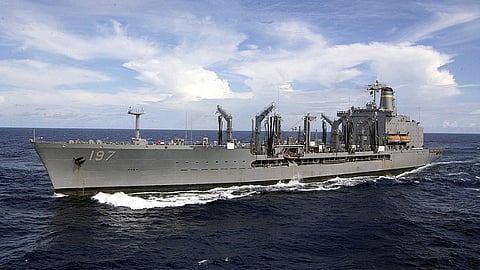US Navy fleet oiler Pecos to be deactivated after 35 years’ service
USNS Pecos, a fleet replenishment oiler (T-AO) operated by the US Navy’s Military Sealift Command (MSC), has departed San Diego and will transit to the US East Coast, where it will be deactivated and removed from service.
Christened in 1989, Pecos served as part of the MSC fleet for 35 years. During its career, the T-AO served in the Persian Gulf during both Operation Desert Storm and Operation Enduring Freedom.
In 2006, Pecos deployed with the MSC Hospital Ship USNS Mercy for five months, delivering aid and humanitarian assistance to the Pacific Islands and Southeast Asia, following the humanitarian assistance missions in the wake of the tsunami in Indonesia. Missions like this evolved into what is now known as the Pacific Partnership missions, which continue to provide medical and humanitarian assistance throughout Southeast Asia.
In 2011, following the deadly earthquake and tsunami in Japan, Pecos rendezvoused with United States Seventh Fleet flagship USS Blue Ridge near Kyushu, Japan as part of Operation Tomodachi. Blue Ridge transferred 96 pallets of humanitarian assistance and disaster relief material to Pecos for delivery to the Essex Amphibious Group and Carrier Strike Group 5.
The pallets consisted of water containers and water purification tablets, first aid products, tarpaulins, blankets, and other supplies. During its support effort to Operation Tomodachi, Pecos completed nine underway replenishments and delivered more than 2.3 million gallons (8.7 million litres) of fuel to other supporting ships.
Pecos is one of the 15 ships of the Henry J. Kaiser-class T-AOs operated by MSC. The Kaiser-class oilers are being replaced by the new John Lewis-class, which includes USNS John Lewis, USNS Harvey Milk, and USNS Earl Warren, all currently operating under MSC.


